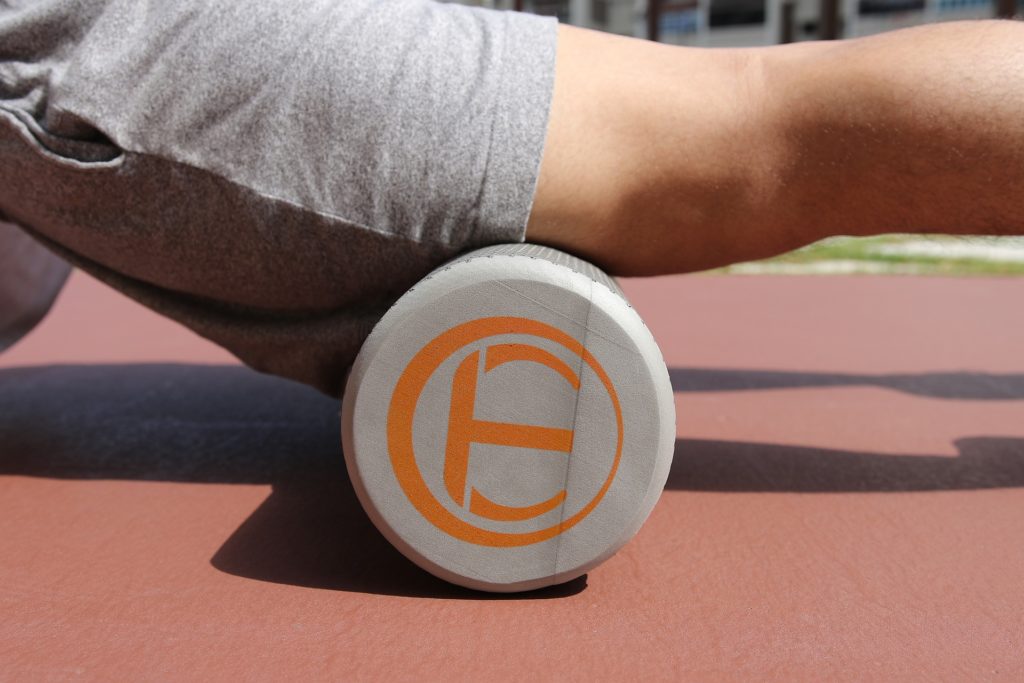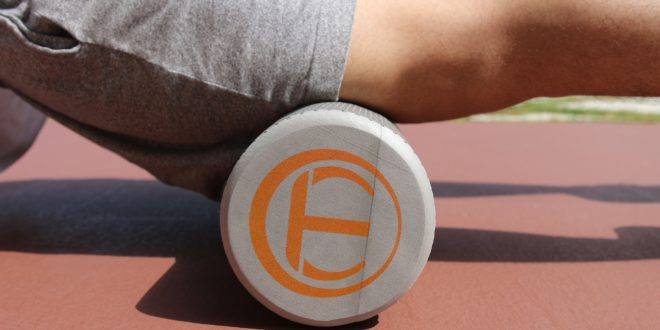A great way to heal your body and prevent injury.
When people feel tightness or a strain in a muscle, one of the first reactions is to stretch that muscle. This may not be the best idea. Imagine that you are holding a string. One end of the string is in your left hand, one end of the string is in your right hand, and there’s a knot in the middle. If you try to pull the string apart from both ends (stretching), the knot in the middle gets tighter.
The same could happen to a knot in your muscles. A knot of tightly contracted muscle fibers can cause stiffness and limit your range of motion. Knots are usually caused from a past injury or muscles being overused. Many people seek out the help of a massage therapist to ease the pain from these knots. Massages are effective, but getting one a couple times a week is not always realistic.
Using a foam roller is a great alternative to getting a massage. A foam roller can loosen up the knot in your muscle by applying pressure like a massage therapist would. By using this technique, you also will increase your flexibility in that muscle.

Roll with me
When using your foam roller, focus on one muscle group at a time. Lift yourself up slightly off the ground and allow your body weight to rest on top of the foam roller. This will apply pressure to the knots and help break them up. Try the following steps to get started.
- Roll about 2-3 cms per second on a particular muscle group. Take your time so you can feel exactly where the knots are and search for the biggest one.
- You may feel some discomfort when you roll on tender areas. This is normal, but if you feel this causes too much pain, either apply less pressure to the knot or stop.
- The biggest knot will be the area you roll onto that feels the most tender. It’s usually the main area that is causing any stiffness in that muscle group. Loosen that up, and other knots will loosen up as well.
- When you find the biggest knot, apply pressure for about 30 seconds, or until you feel the knot loosen and you no longer feel tenderness. Depending on how tight the knot is, it may take longer.
- Most importantly, make sure you breathe. When people feel pain or discomfort they are more likely to tense up or hold their breath. Think of it this way, if I were to apply pressure to attempt to massage your bicep while you were flexing, I wouldn’t be able to get very deep. If you relaxed your bicep and breathed, the muscle would soften making it suppler and easier to work. The same holds true with foam rolling. You have to relax and breathe to allow the foam roller to break up the knot and work its magic.
- Stretch. After using the foam roller and loosening the knots in your body, it’s a good time to stretch those same muscles to increase your flexibility.
Foam rolling can help to reduce and prevent pain from training, as well as general wear and tear on your body. Doing this regularly can help your body recover more easily and prevent future injury.
Article provided by Cigna.
Healey, K, Hatfield D, Blanpied, P, Dorfman L, Riebe, D, The Effects of Myofascial Release with Foam Rolling on Performance, J Strength Cond Res. January 2014, 28(1):61-8Pearcey, G, Bradbury-Squires, D, Kawamoto, J, Drinkwater, E, Behm, D, Button, G, Foam Rolling for Delayed-onset Muscle Soreness and Recovery of Dynamic Performance Measure, J Athl Train, January, 2015, 50(1):5-13Škarabot, J, Beardsley, C, Štirn, I, Comparing the Effects of Self‐Myofascial Release with Static Stretching on Ankle Range‐of‐motion in Adolescent Athletes, Int J Sports Phys Ther. 2015 Apr; 10(2): 203–212









Join the Discussion
Type out your comment here:
You must be logged in to post a comment.